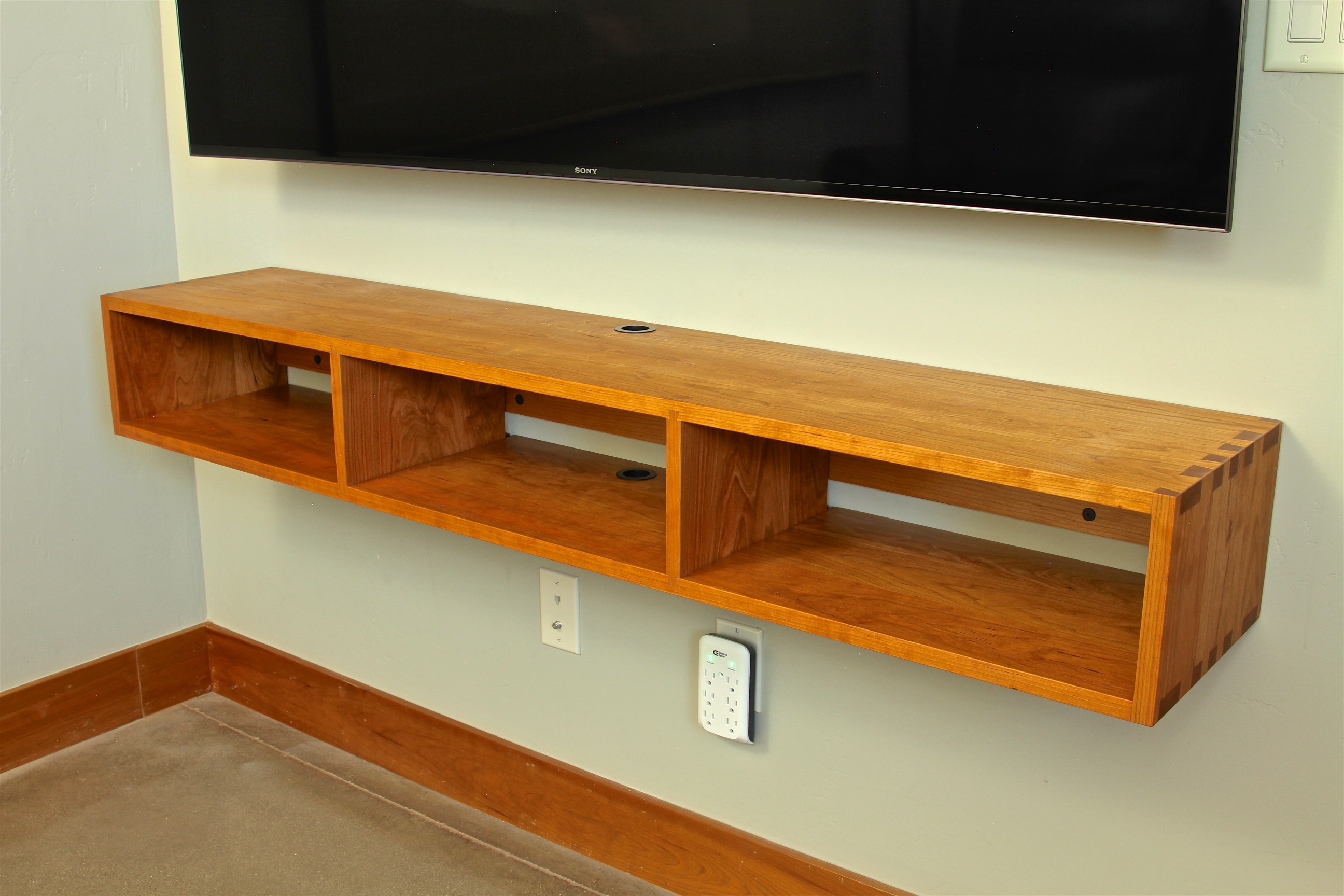We recently hung a flat screen TV in a small room and needed a place to store all of the related media components, e.g., cable box, Blu-Ray player, streaming box, etc. In order to save floor space we decided that instead of a traditional entertainment center-type cabinet perhaps a floating TV shelf media console might be a better solution. This furniture piece is my original design with the intent to have a contemporary look and be more functional than anything else. Even though the overall design is basically an uncomplicated, simple rectangular box, I wanted to make something that would challenge my woodworking skills by use of more complicated, interesting joinery – at least for my skill level.
First the case is assembled with hand-cut dovetails. I have never cut dovetails by hand on such a large piece (60″ length x 12″ wide x 8″ height) so that was a good learning experience.
Second I decided to have sliding dovetail joints for the two divider panels, not for the added strength but because I like the look. I’ve made sliding dovetail joints before and they are very difficult to assemble when glue is applied in the joint. There is a variation that I have never attempted called a *tapered* sliding dovetail in which both the male and female ends have a very small taper along their lengths, typically 1/16″ over 12″. This allows the joint to assemble easily until the last inch or so when the tapered parts come together. In addition I used liquid hide glue for these joints because it has a longer open time and is more “slippery” compared to traditional yellow glues. Proper sizing of the taper is the crux of this joint and very, very small variations make for a loose joint versus a joint that is almost impossible to get into its final position. I found the process to be very fussy but after numerous practice joints the finished piece came together relatively easy.
Third (in terms of difficulty), before assembly of the case and cutting of joinery, the first construction step is to glue up individual boards into panels that become the top, bottom, and sides. I put a lot of time and effort in selecting & arranging the individual boards to ensure a pleasing, continuous grain pattern. An added complexity is that I buy my lumber unseen from an internet supplier so I have to make do with whatever I receive; it can take some time to figure out pleasing grain patterns with what is sent to me. As you can see in the photographs, the grain wraps around the top to the sides in a “waterfall” pattern. This is a very popular design feature in today’s contemporary furniture, though it is more common to see this with mitered joints.
A French Cleat is the mechanism that attaches the shelf unit to the wall to give it the “floating” appearance. The piece is finished with Watco Natural Danish Oil followed with several coats of Liberon clear wax.
This is a simple design that is functional, looks good, and blends in with the rest of the house. But what makes this piece special for me is that it stretched my woodworking skills; hand-cut dovetails, tapered sliding dovetails and a continuous, waterfall-style grain pattern. If there are any woodworkers reading, then they will appreciate the details and the added time necessary for making this piece. An alternative construction could have been screws and simple dado and rabbet joints for the joinery that would have resulted in the same overall look, have similar strength and durability for its purpose, and would have been completed in 1/10th the time. But as the saying goes, beauty is in the eye of the beholder!





